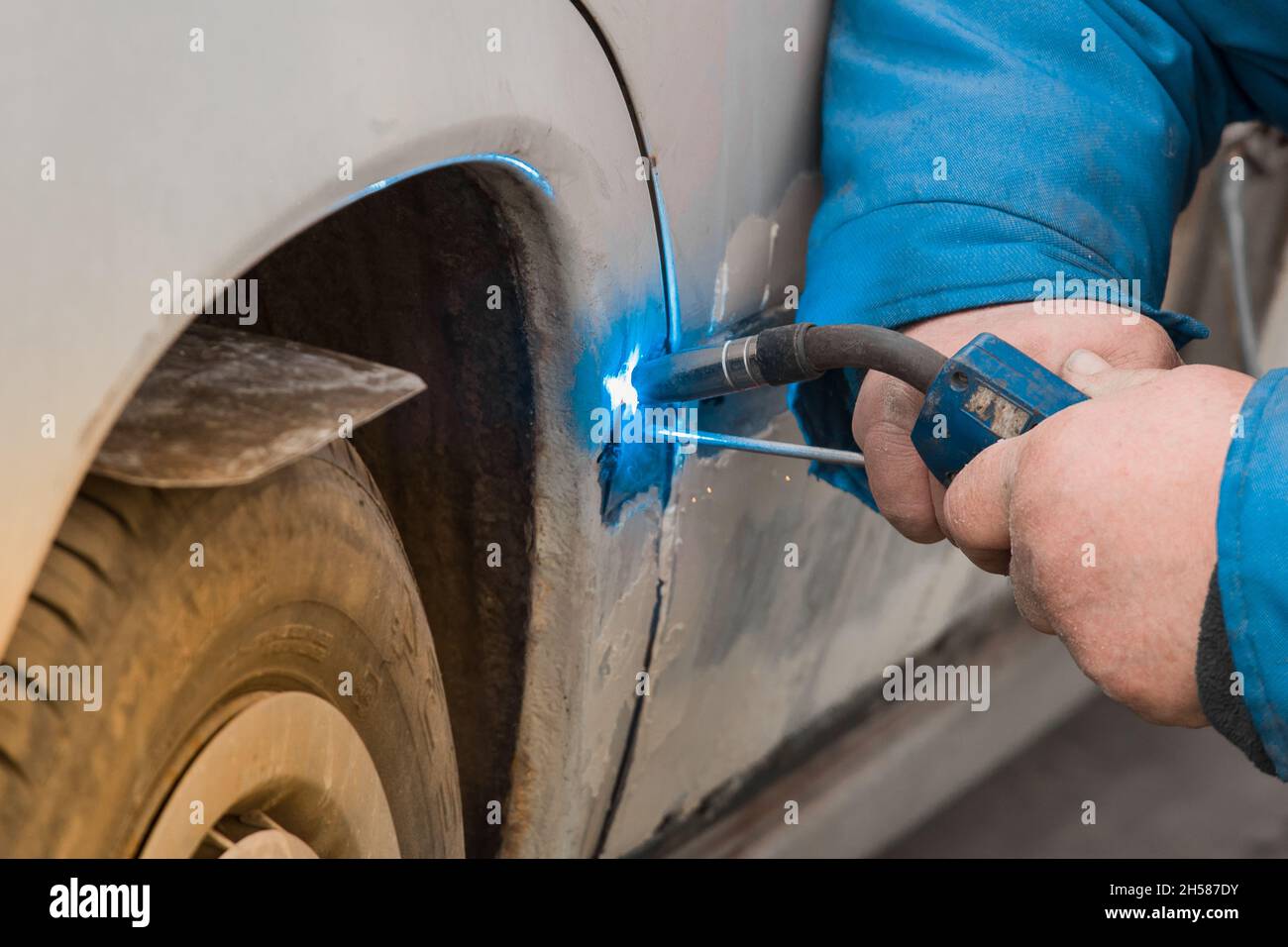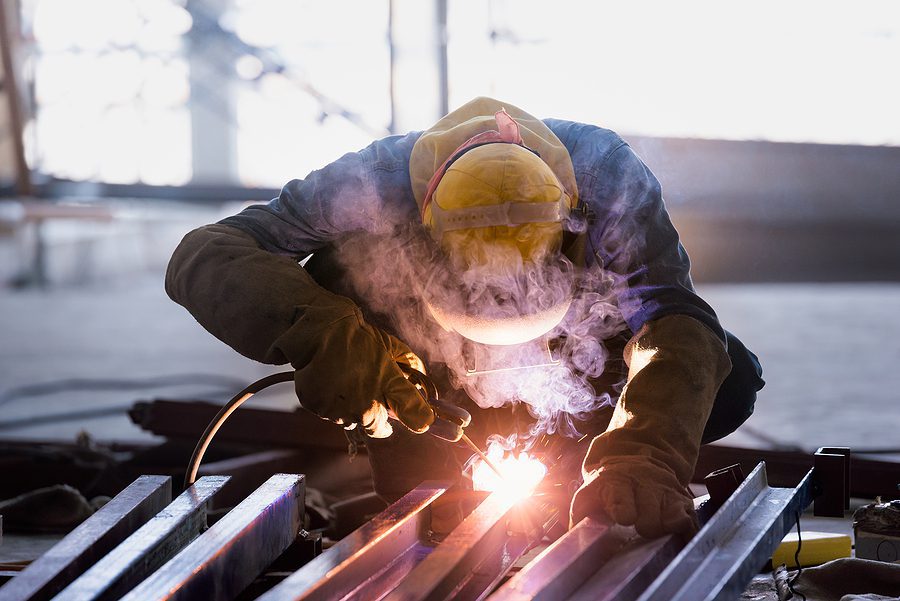Typical Welding Repair Issues and Exactly How to Address Them Effectively
Welding repairs usually encounter a series of problems that can jeopardize the stability of the end product. Typical issues include insufficient infiltration, porosity, and imbalance, among others. Each problem presents unique obstacles that need particular techniques for resolution. Comprehending these concerns is necessary for welders aiming to enhance their skills and outcomes. This discussion will explore these usual welding fixing concerns and efficient techniques to address them.
Inadequate Infiltration
Insufficient infiltration happens when the weld metal falls short to fully fuse with the base product, causing weak joints and possible structural failings. This problem often originates from inadequate heat input, wrong electrode angle, or incorrect welding rate. Welders might run into insufficient penetration due to a mistake of the needed parameters for a specific product thickness or kind. Furthermore, contamination on the base material's surface area can hinder effective bonding, worsening the trouble. To attend to inadequate infiltration, welders ought to assure suitable setups on their equipment and keep a clean work surface area. Routine inspection of welds is recommended to recognize any type of shortages early, enabling prompt adjustments and the avoidance of jeopardized architectural stability in bonded assemblies.
Porosity
Porosity is an usual problem in bonded joints that materializes as tiny gas bubbles trapped within the weld steel. This defect can jeopardize the stability of the weld, causing decreased toughness and prospective failing under anxiety. Belgrade Welding. Porosity usually occurs from contamination, wetness, or incorrect welding methods, which allow gases to escape into the liquified weld swimming pool. To resolve porosity, welders should assure correct surface preparation, preserve a tidy functioning setting, and use ideal welding parameters. Additionally, choosing the best filler product and shielding gas can alleviate gas entrapment. Routine inspection and testing of welds can help identify porosity early, guaranteeing prompt corrective activities are taken, therefore protecting the top quality and integrity of the welded structure
Imbalance
Imbalance in welding can emerge from numerous aspects, consisting of incorrect arrangement and thermal expansion. Understanding the root triggers is important for effective resolution. Numerous improvement techniques are offered to realign parts and ensure structural honesty.
Sources of Misalignment
Welding misalignment typically originates from a variety of underlying concerns that can compromise architectural integrity. One key cause is inappropriate fit-up of elements prior to welding, which can lead to voids and unequal surfaces. Variants in thermal growth throughout the welding process can also cause distortion, specifically if the products being signed up with have different coefficients of expansion. Furthermore, inadequate fixturing and clamping may stop working to hold parts safely in area, leading to movement throughout welding. Badly kept devices, consisting of welding equipments and devices, might introduce incongruities in the weld bead, more adding to imbalance. Finally, driver mistake, stemming from insufficient training or experience, can also play a substantial function in creating misaligned welds.
Improvement Strategies Readily Available
Addressing imbalance efficiently requires a mix of corrective techniques tailored to the specific issues available. One typical method is making use of jigs or components to hold parts in the proper position throughout welding, making certain regular placement. Furthermore, pre-heating the materials can help in reducing distortion and boost fit-up. For considerable imbalance, mechanical realignment methods, such as using hydraulic jacks or clamps, can be employed to remedy the placement prior to welding. Post-weld heat therapy may additionally be required to ease tensions caused by imbalance. Finally, mindful evaluation and adjustment throughout the setup stage can stop misalignment concerns from becoming significant issues, promoting a smoother welding process and boosting overall structural stability.
Distortion
Distortion is an usual difficulty in welding that can develop from various elements, including irregular heating & cooling. Comprehending the reasons for distortion is essential for implementing reliable avoidance techniques. Resolving this problem not just improves structural stability however likewise improves the total quality of the weld.
Root causes of Distortion
When subjected to the intense heat of welding, materials usually undergo changes that can result in distortion. This phenomenon mostly arises from thermal growth and tightening during the welding process. As the weld area warms up, the material expands; upon cooling, it contracts, which can produce interior anxieties. In enhancement, irregular home heating across a work surface can exacerbate these stress and anxieties, leading to warping or flexing. The sort of material also plays a considerable duty; steels with differing thermal conductivity and coefficients of growth might react in different ways, bring about uncertain distortions. In addition, inadequate joint style and insufficient fixturing can contribute to misalignment throughout welding, increasing the possibility of distortion. Recognizing these reasons is crucial for reliable welding repair service and prevention strategies.
Avoidance Techniques
Effective avoidance techniques for distortion throughout welding concentrate on regulating warm input and guaranteeing proper joint layout. Preserving a regular warmth input helps to lessen thermal growth and contraction, which can lead to distortion. Making use of techniques such as pre-heating the workpiece can likewise reduce the temperature slope, promoting consistent home heating. Additionally, choosing appropriate joint styles, such as T-joints or lap joints, can enhance stability and lower tension focus. Carrying out correct fixturing to secure the work surfaces in position additionally help in maintaining positioning throughout the welding process. Ultimately, staggered welding series can distribute warm extra uniformly, avoiding local distortion. By applying these methods, welders can greatly reduce the probability of distortion and boost the overall top quality of their welds.
Breaking
Breaking is an usual concern run into in welding repairs, often resulting from different variables such as incorrect air conditioning prices, product choice, or insufficient joint prep work. The event of splits can greatly jeopardize the stability of the weld, bring about potential failures during operation. To address this concern, welders must first examine the root triggers, making certain that products are compatible and appropriately chosen for the specific application. Additionally, regulating the air conditioning price throughout the welding procedure is essential; rapid air conditioning can generate stress and anxiety and bring about splitting. Correct joint layout and prep work find likewise add to reducing the danger. Carrying out these methods can improve weld high quality and longevity, ultimately reducing the possibility of splitting in completed weldments.

Incomplete Blend
A substantial concern in welding repairs is insufficient fusion, which takes place when the weld metal does not adequately bond with the base product or previous weld passes - Montana Mobile Welding and Repair Belgrade Fabrication. This issue can result in weak points in the joint, possibly jeopardizing the honesty of the welded framework. Elements contributing to incomplete combination consist of insufficient heat input, inappropriate welding technique, and contamination of the surface areas being signed up with. To address this concern effectively, welders must assure proper pre-weld cleaning and surface preparation, along with readjust their welding criteria to achieve appropriate infiltration and blend. Routine inspection throughout the welding process can additionally help recognize incomplete combination early, enabling prompt rehabilitative measures to enhance the overall high quality of the weld
Overheating
While welding repair services can boost architectural honesty, overheating presents a significant challenge that can lead to material degradation. Excessive heat during welding can alter the mechanical residential or commercial properties of steels, leading to minimized toughness, enhanced brittleness, and bending. This sensation is specifically critical in high-stress applications where structural dependability is extremely important. Identifying getting too hot can involve visual examinations for discoloration or distortion, as well as keeping track of temperature throughout the welding procedure. To alleviate the threats connected with getting too hot, welders should employ ideal strategies, such as regulating heat input, changing traveling rate, and using suitable filler products. In addition, applying pre- and post-weld warm treatments can aid restore product residential properties and improve the general top quality of the fixing, making sure long-lasting efficiency and security.
Regularly Asked Inquiries
What Are the Typical Indicators of a Welding Issue?

Just How Can I Test My Welds for High quality?
To test welds for high quality, one can make use of visual assessments, ultrasonic screening, and radiographic methods. Each strategy ensures structural stability, recognizes defects, and confirms adherence to defined criteria, inevitably boosting the dependability of the welded joints.
What Safety Precautions Should I Take While Welding?
When welding, one ought to prioritize safety by putting on appropriate personal safety tools, making certain correct air flow, protecting flammable materials away, preserving a clean workspace, and understanding surroundings to avoid crashes and injuries.
Can I Repair a Weld Without Renovating the Entire Joint?
Fixing a weld without remodeling the whole joint is possible, depending on the damages (Montana Mobile Welding and Repair Belgrade Fabrication). Techniques such as grinding, adding filler material, or utilizing a welding process can properly deal with specific imperfections while protecting the surrounding framework
What Equipment Are Essential for Reliable Welding Repairs?
Crucial tools for reliable welding repair work consist of a welding maker, wire brush, mill, protective equipment, clamps, and filler products. Each device plays a vital duty in making certain go to these guys top quality and security throughout the fixing procedure. Porosity typically occurs from contamination, dampness, or improper welding methods, which enable gases to get away into the molten weld swimming pool. Inadequately maintained devices, consisting of welding devices and devices, may present incongruities in the weld grain, additional adding to imbalance. When subjected to the intense warmth of welding, products often undertake adjustments that can lead to distortion. Splitting is a common problem experienced in welding repair services, usually resulting from look what i found various elements such as incorrect cooling rates, product option, or poor joint preparation. A considerable issue in welding repair services is insufficient blend, which occurs when the weld metal does not appropriately bond with the base product or previous weld passes.